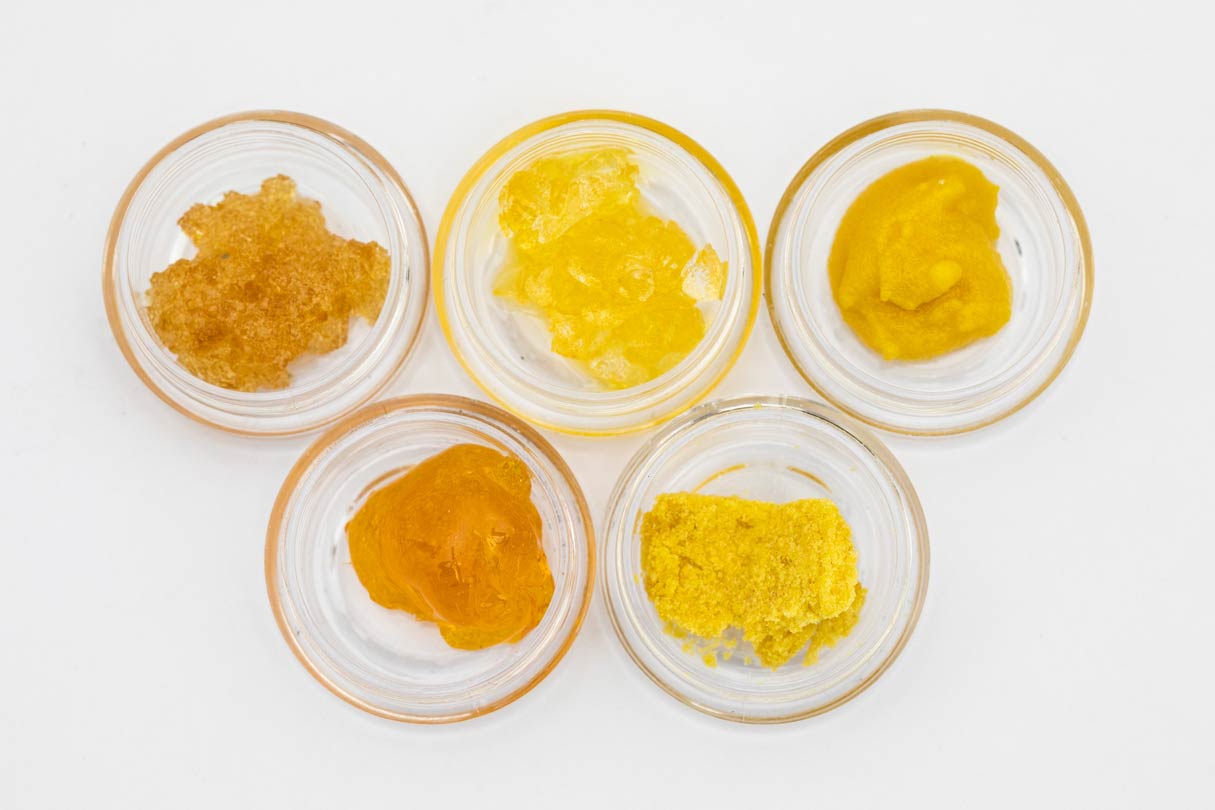
Cannabis-derived terpenes are taking over more and more consumer products, from terpene-infused pre-rolls to strain-specific, terpene-rich vape pens. As a result, extractors are pivoting to capture these value-added compounds from the more general cannabinoid extraction process. Hydrocarbon Extraction is one such way to produce high terpene profile extracts or HTPSEs.
There are two critical points in terpene extraction: a non-destructive chemical process and an unaltered final profile. The industry gold standard is high terpene extraction through hydrocarbon extraction methods, resulting in nuanced experiences for consumers, packed with improved health benefits.
Understanding Terpenes
Scientific research indicates that the cannabis species produces more than 200 varieties of terpene (e.g., limonene, myrcene, and linalool). This means it has one of the highest concentrations of terpenes in any plant species.
Terpenes (terpenoids, isoprenoids, and terps) are organic chemicals naturally found in cannabis flowers. Individual terpenes (sourced from other botanicals) are under investigation for possible health benefits on their own, but cannabis experts believe terpenes offer enhanced effects when mixed together. This is called the Entourage Effect, a term popularized by Dr. Ethan B. Russo.
The terpene profiles between cannabis cultivars, and even between plants within the same cultivar, are colorful and highly varied. Photochemical consistency between harvests and within the same harvest is an ongoing struggle for cultivators. Environmental factors, including light, nutrients, temperature, and stress, can dramatically impact terpene production.
Cannabis companies may rely on ethanol extraction or carbon dioxide methods for harvesting cannabinoid products. However, these traditional extraction processes cause a significant loss of terpenes due to volatilization. Terpenes tend to be highly volatile compounds in response to temperature, pressure, and exposure to light. As a result, many extracts lose much of their natural flavors, aroma, and possible health effects.
While some manufacturers may follow up by reintroducing terpenes into the extracted products, these are mainly derived from outside botanical sources, such as fruits and herbs.
The good news is that with emerging advanced technologies like light hydrocarbon extraction, you can harvest high-terpene, full-spectrum extracts (HTFSEs) that provide users with a highly fulfilling experience.
Benefits of High-Terpene Profile Extracts
Aside from their characteristic taste and aroma, many consumers believe that HTFSEs offer a wide range of health benefits that potentially increase the appeal of cannabis products.
Some of the reported benefits of terpenes in the scientific literature include:
- Improving cognitive function: Products with high terpene profiles provide users with enhanced cognitive abilities such as working memory, executive functions, and alertness. For example, pinene terpenes can help improve focus.
- Alleviating anxiety and depression: Terpene improves general mood in users. Linalool and pinene are two common cannabis-derived terpenes thought to have antidepressive effects.
- Supporting addiction recovery: Terpenes enhance the anti-addiction effects of cannabis against opioids and psychostimulants.
Easing physical symptoms: Products with specific terpenes may provide comfort for chronic medical issues such as respiratory and muscular disorders. For example, pinene offers anti-inflammatory and antibacterial effects.
Hydrocarbon Extraction for Botanical Compounds
The hydrocarbon extraction method has been popular in the food industry since the 1970s. One significant advantage is that manufacturers may process multiple products from a single extraction without numerous refinements.
Hydrocarbon extraction functions effectively due to the polarity of the solvent. Non-polar hydrocarbons attract terpenes and cannabinoids while repelling water-based compounds, resulting in a more refined profile.
The hydrocarbon extraction method involves advanced equipment that enables you to prepare high-cannabinoid, full-spectrum extracts (HCFSEs) with high levels of THCA (estimated 50%), with terpenes making up 15%–40% of the product content.
Essentially, HCFSEs have a grainier crystalline texture, and HTFSEs have a less dense and sauce-like consistency. Therefore, separating the liquids from the solids is a relatively simple laboratory process.
The Light Hydrocarbon Alternative
Propane and butane are two examples of solvents used in light hydrocarbon extraction methods. These compounds naturally occur in decomposed organic material and natural formations such as sedimentary rocks and dirt. The term “light hydrocarbon” stems from the low molecular weight of the compounds used in the process.
Light hydrocarbon extraction methods enable you to prepare HTFSEs by working with a specific set of equipment, safety regulations, and building codes (see Precision Extraction’s Pods and Rooms).
Butane is especially useful for producing HTFSE because it has an extremely low boiling point (31.1°F). This means it’s possible to preserve even highly volatile terpenes when evaporating solvents by keeping temperatures low.
While the sophisticated equipment required for light hydrocarbon extraction may deter some investors, the process reduces manufacturing costs while maximizing profits in the long term. Additionally, by applying lightweight hydrocarbon extraction methods, you can create greater diversity and quality of products, serving the rising consumer demand for intensely flavorful extractions.
Behind the Light Hydrocarbon Extraction Process
Manufacturers begin the light hydrocarbon extraction process by assessing the quality of cannabis material, as not all flower is suitable for terpene extraction.
With premium plant material secured, manufacturers begin the initial extraction process by adding the cold hydrocarbon solvent. Next, the process dissolves terpenes and cannabinoids into the solvent, readying it for refinement.
The refinement phase differs according to the manufacturer’s desired goals but usually involves running the solvent through filtering media that further eliminate impurities, like waxes, chlorophyll, and the like.
Finally, manufacturers purge residual hydrocarbons from the collection point and transfer them back to the solvent. This requires a closed-loop system. For HTFSEs, manufacturers usually apply centrifugal terpene removal as a finalized purging process. However, you may use a combination of methods if you plan to retain the whole essence of the cannabis plant.
Versatility and Yield With Hydrocarbon
Hydrocarbon extraction operates at lower temperatures compared to carbon dioxide setups. As a result, extractors maintain greater control while preserving the natural cannabis’ quality and characteristics.
For example, a butane extraction method may yield 15 to 32 percent of weight, while carbon dioxide alternatives may be limited to an estimated seven to eight percent. Also, the thoroughness of the process eliminates undesirable tastes, such as the bitterness of chlorophyll.
The light hydrocarbon extraction alternative offers fast and consistent yields for a competitive edge within the cannabis industry.
Applying Precision Extraction for Your Operations
High- terpene extracts refine the age-old process of isolating and improving the natural compounds found in cannabis. Today, some of the best-processed consumer products have undergone hydrocarbon extraction methods with incredible results.
As only one example, “sauce” or “terp sauce” (the combination of concentrated terpene and THCa) has become a highly sought-after and premium extract, in great demand among consumers. The specialized product provides customers with a rich aroma and distinctive taste that attract a high price. It’s a product of light hydrocarbon extraction.
Ultimately, through precise light hydrocarbon extraction, you can deliver a unique experience of savoring the original appeal of the cannabis plant as nature intended. Plus, hydrocarbon extraction makes it easy for manufacturers to meet ever-evolving consumer tastes.
Browse Precision Extraction’s range of advanced professional-grade extraction equipment. It’s time to unlock that competitive edge with HTFSEs.








